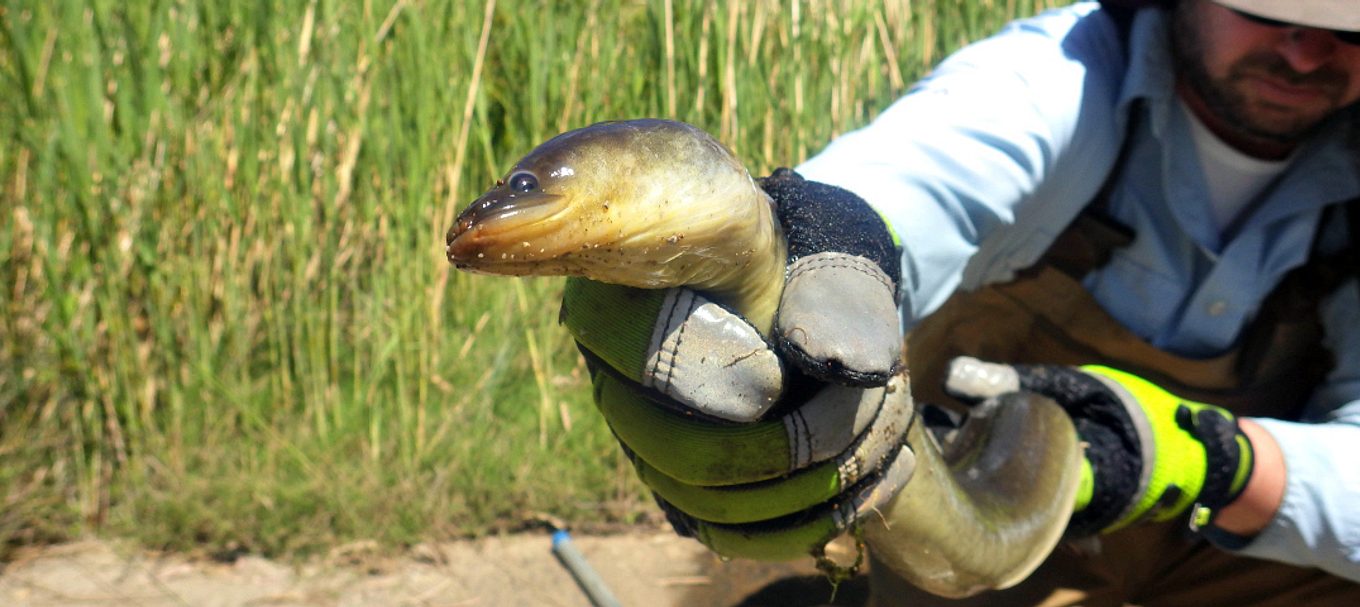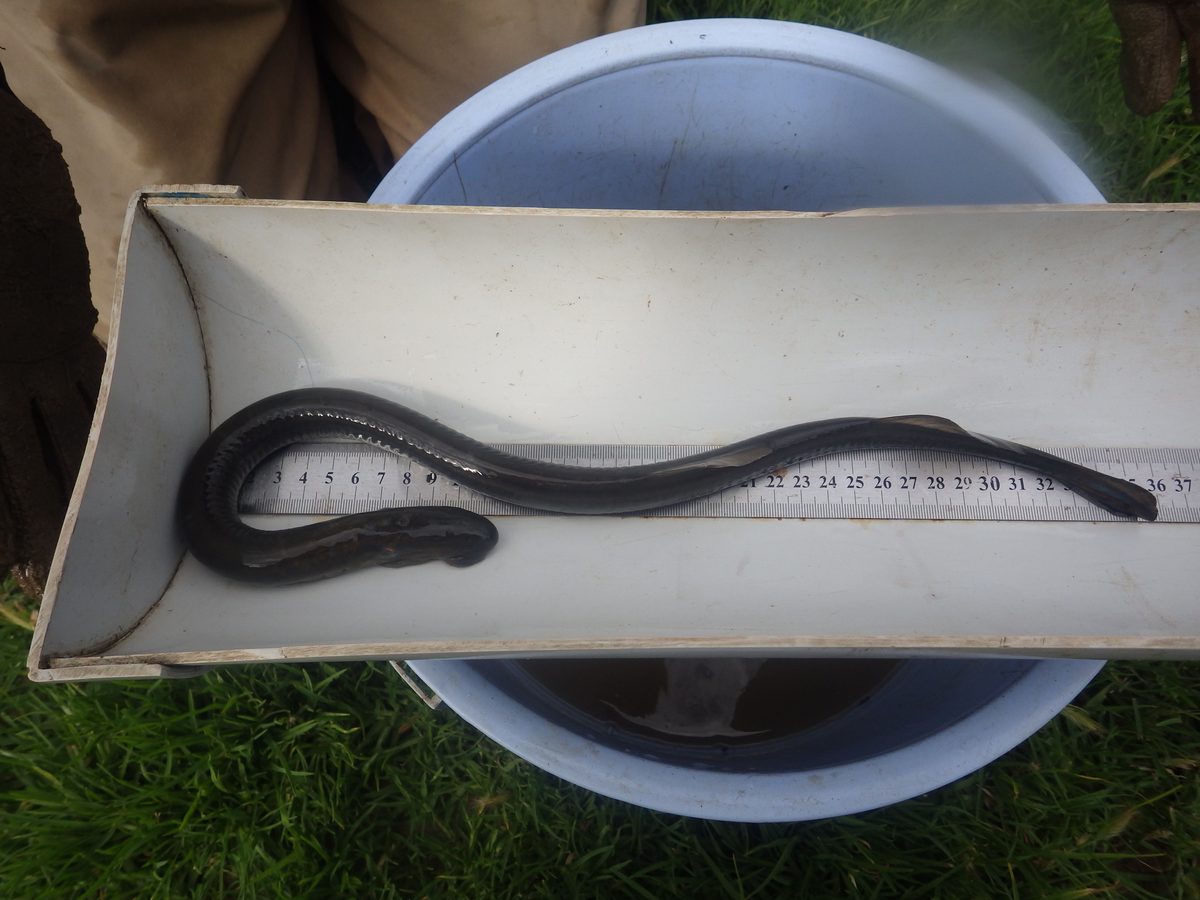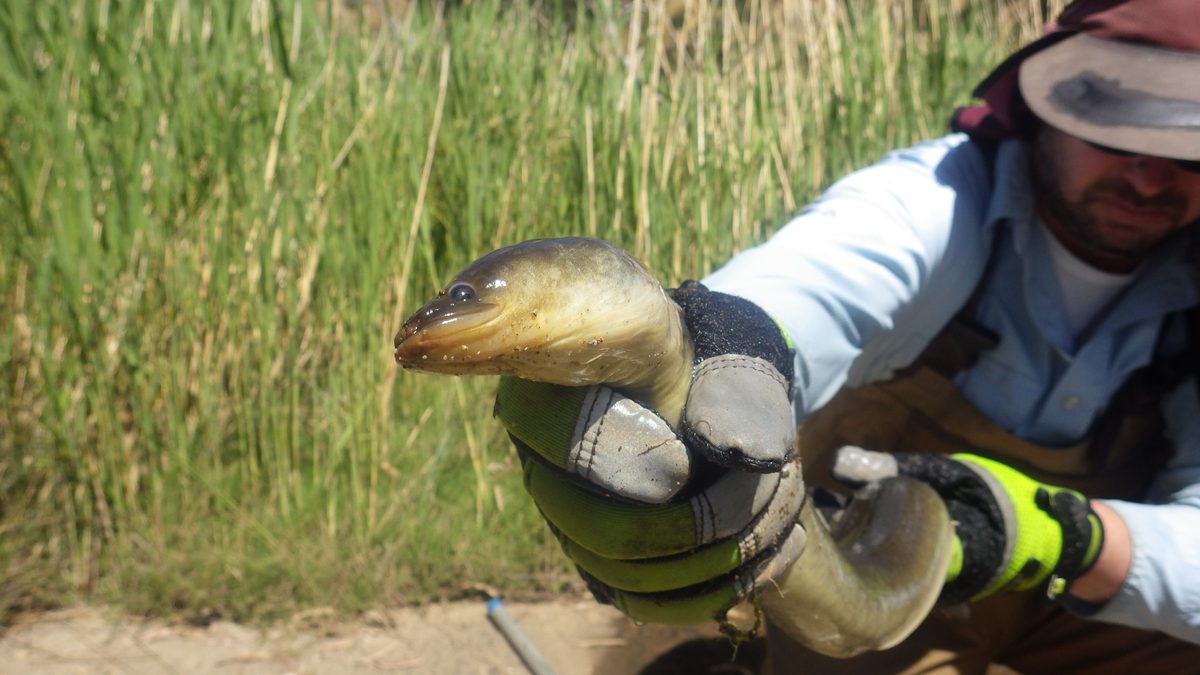
How rare fish are making a recovery
Ever wondered about the creatures living in Adelaide’s River Torrens? Or the Onkaparinga River south of the city? Spoiler alert: it’s not just ducks and swans.
It turns out that two rare fish are still calling these rivers home.
Fish monitoring projects have recently uncovered a pouched lamprey in the River Torrens and a short-finned eel in the Onkaparinga River. Neither have been seen for at least nine years, and both were travelling solo – which proves just how rare they are.
So what do we know about them?
Pouched lamprey
Pouched lamprey (Geotria australis) are an ancient species of fish that are usually 30 to 40 centimetres long but can reach a maximum length of 70 cm.
They have an interesting life cycle. Born in fresh water, they move to the sea as young adults and spend much of their life feeding parasitically on host fish before returning to fresh water to breed, lay eggs and then die.
This fish has no jaw but still manages to be kind of scary – when they’re out at sea they eat the blood and muscle of other fish with their sucker-like mouth and teeth.

Until now, a pouched lamprey hasn’t been found in the River Torrens since 2008, and they are considered endangered in South Australia.
They share the Torrens with just seven other indigenous freshwater fish species: the climbing galaxias (Galaxias brevipinnis), common galaxias (Galaxias maculatus), mountain galaxias (Galaxias olidus), flathead gudgeon (Philypnodon grandiceps), dwarf flathead gudgeon (Philypnodon macrostomus), western bluespot goby (Pseudogobius olorum) and the congolli (Pseudaphritis urvillii), and live side-by-side with a number of introduced species including carp.
There used to be 16 indigenous freshwater fish species that lived in the River Torrens, but with just eight remaining and half of these considered as extinct in the wild, critically endangered, endangered, vulnerable or rare, it’s a dire situation.
Short-finned eel
Short-finned eels have an almost opposite lifecycle. They live in fresh water for about 10 to 20 years before moving downstream and out to sea to spawning grounds believed to be 3000 kilometres away in the Coral Sea.
When their eggs hatch, this new generation gradually makes its way back to fresh water.

At water temperatures below ten degrees, it is thought that this fish hibernates. And yes in case you’re wondering, an eel is still considered a fish.
Although they are fierce nocturnal predators, the short-finned eel is actually omnivorous, feeding on fish, crustaceans, molluscs, insects and aquatic plants. They can also survive long periods without eating and have been observed to go without food for ten months – even when they aren’t hibernating.
Before this sighting, the last time a short-finned eel was caught in the Onkaparinga River was in 2006.
What’s bringing them back to these rivers?
Releasing what’s called ‘environmental water’ from reservoirs back into these rivers to mimic some of the water flows that the rivers would have seen prior to European settlement is making a huge difference.
This work is being carried out by the Adelaide and Mount Lofty Ranges Natural Resources Management Board and SA Water since 2012, and the idea is that reproducing some of these original water flow cycles will help species be self-sufficient and survive in these waterways.
In the River Torrens, fishways have been installed at three locations along the river. These help fish move between the sea and the river’s freshwater habitats, which is important, given the lifecycle of these two fish species.
Fish monitoring is undertaken every autumn and spring, and while it’s already showing that native fish populations have increased thanks to these programs, it’s clear there is still a lot of work to be done.
The fish monitoring work that led to these finding was done by Aquasave – Nature Glenelg Trust on behalf of the Adelaide and Mount Lofty Ranges Natural Resources Management Board. For more stories about the recovery of Adelaide’s environments, check outNatural Resources Adelaide and Mount Lofty Ranges’ website.





